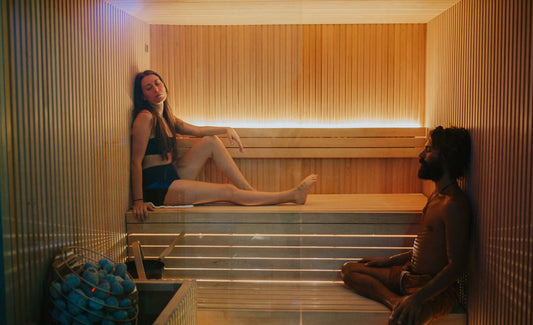In the aerospace industry, attire reflects a blend of technical precision and professional standards. Aerospace engineers work in diverse environments, from office settings to high-tech laboratories and manufacturing floors. This guide delves into the clothing choices for aerospace engineers, considering various professional settings and roles within the field.
Understanding Professional Attire in Aerospace Engineering
Aerospace engineers often work in environments that require both formal and practical attire. The type of clothing chosen can vary based on the specific role, workplace, and activities involved. Professional attire in aerospace engineering typically underscores functionality, safety, and adherence to industry standards.
Men’s Attire in Aerospace Engineering
Business Formal
Suiting
- Color: Neutral colors such as navy, charcoal, or black are preferred. These colors project a professional and polished appearance.
- Fit: Opt for well-fitted suits with single-breasted jackets, ideally featuring two or three buttons. The fit should be tailored to provide a sharp and clean look.
- Fabric: Wool or wool blends are recommended for their durability and refined appearance.
Shirts and Ties
- Shirts: Crisp, well-pressed shirts in white or light blue are standard. These colors offer a classic and professional look.
- Cuffs: French cuffs are an optional choice for added elegance, though they should be chosen based on personal preference and company culture.
- Ties: Silk ties in solid colors, stripes, or subtle patterns like polka dots are appropriate. Avoid overly bold or flashy designs.
Footwear
- Shoes: Choose Oxfords or Derby shoes in black or dark brown. These shoes should be polished and in excellent condition.
- Socks: Socks should match the trousers and be long enough to avoid showing skin when sitting.
Accessories
- Belt: A leather belt should match the color of the shoes for a cohesive look.
- Wristwatch: Opt for a conservative and professional wristwatch.
- Cufflinks: Keep cufflinks simple and understated to maintain a professional appearance.
Business Casual
Slacks and Trousers
- Styles: Tailored slacks or chinos offer a comfortable yet professional look.
- Colors: Neutral shades such as khaki, navy, or grey are suitable.
- Fit: The fit should be comfortable but not too loose, ensuring a neat appearance.
Shirts and Sweaters
- Shirts: Collared shirts, including button-down oxfords or polo shirts, are ideal for business casual settings.
- Layering: Consider adding sweaters or sweater vests for added professionalism.
- Colors: Stick to solid colors or subtle patterns for a polished look.
Footwear
- Shoes: Loafers, brogues, or monk strap shoes in leather are appropriate.
- Socks: Socks can introduce a bit more color or pattern but should remain tasteful and professional.
Accessories
- Belt: Choose a leather belt that matches the shoes.
- Watch: A more casual watch is acceptable, provided it still looks professional.
Women’s Attire in Aerospace Engineering
Business Formal
Suits and Separates
- Suit Types: Pantsuits or skirt suits are common choices for a professional appearance.
- Colors: Opt for neutral colors such as black, navy, or grey. Subtle pinstripes or checks are also acceptable.
- Fit: Ensure the suit is tailored with a clean line. Skirts should be knee-length or slightly longer to maintain a professional appearance.
Blouses and Tops
- Blouse Material: Choose high-quality fabrics such as silk, cotton, or blends.
- Colors and Patterns: Solid colors or subtle patterns, such as pinstripes, work well. Avoid low necklines or sheer materials.
- Fit: The blouse should be modest and well-fitted to complement the suit.
Accessories
- Jewelry: Simple pieces like a classic necklace, stud earrings, and a wristwatch are suitable.
- Belts: Match the belt with the suit or shoes if worn.
- Handbags: Opt for structured handbags in neutral colors and appropriately sized for a professional look.
- Shoes: Closed-toe shoes with a moderate heel height (2-3 inches) are recommended, in colors that complement the outfit.
Business Casual
Skirts and Trousers
- Options: Choose from trousers, skirts, or dresses.
- Styles: Consider pencil skirts, A-line skirts, or tailored trousers for a professional yet comfortable look.
- Colors: Neutral or muted tones work best.
- Fit: Ensure the fit is comfortable and professional; avoid overly tight or loose styles.
- Dress Length: Dresses should be knee-length or longer with a modest neckline.
Blouses and Sweaters
- Tops: Blouses, knit tops, or collared shirts are suitable for business casual environments.
- Colors and Patterns: More variety in colors and patterns is acceptable, but avoid anything too bold or distracting.
- Layering: Cardigans or blazers can add professionalism and allow for personal style expression.
Shoes and Accessories
- Footwear: Loafers, flats, or heels are acceptable, including open-toe options if appropriate.
- Condition: Ensure shoes are polished and in good condition.
- Accessories: Scarves, jewelry, and handbags can reflect personal style but should maintain a balance between expression and professionalism.
Special Considerations and Tips
Aerospace engineers often encounter specific scenarios where attire choices are crucial, such as site visits, client interactions, or working on sensitive projects.
Client Meetings and Presentations
Dress Codes
- Adherence: Follow the client’s dress code while upholding professional standards.
- Industry Research: Understand the client’s industry to ensure your attire aligns with their expectations.
- Formality: Business formal is usually preferred in conservative industries, while business casual may be acceptable in others.
Impressions
- Professionalism: Dressing professionally demonstrates respect for the client and the importance of the meeting.
- Detail-Oriented: Your attire should reflect your attention to detail and commitment to the role.
- Avoid Distractions: Choose clothing and accessories that do not detract from the focus of the meeting.
Workplace Culture and Dress Codes
Flexibility
- Variation: Dress codes can vary between companies, departments, or teams within the aerospace industry.
- Casual Days: Some companies may allow casual attire on specific days, such as "casual Fridays."
- Environment: Understand your workplace culture to align your attire with company norms.
Corporate Policies
- Guidelines: Familiarize yourself with your company’s dress code policy.
- Compliance: Adhere to guidelines on clothing, footwear, accessories, and grooming.
- Ambiguity: If the dress code is unclear, observe others and seek clarification as needed.
Conclusion
In aerospace engineering, attire serves as a reflection of both professionalism and practicality. By understanding the distinctions between business formal and business casual dress codes, aerospace engineers can choose their clothing to suit various professional settings effectively. Whether dressing for a critical client presentation, a site visit, or a standard day in the office, the goal is to balance professionalism with practicality, ensuring that your appearance meets the high standards of the aerospace industry.
Thoughtful choices in attire not only enhance professional image but also contribute to a positive work environment and a lasting impression on clients and colleagues. In the dynamic and diverse field of aerospace engineering, dressing appropriately for each scenario demonstrates both competence and respect for industry norms.


